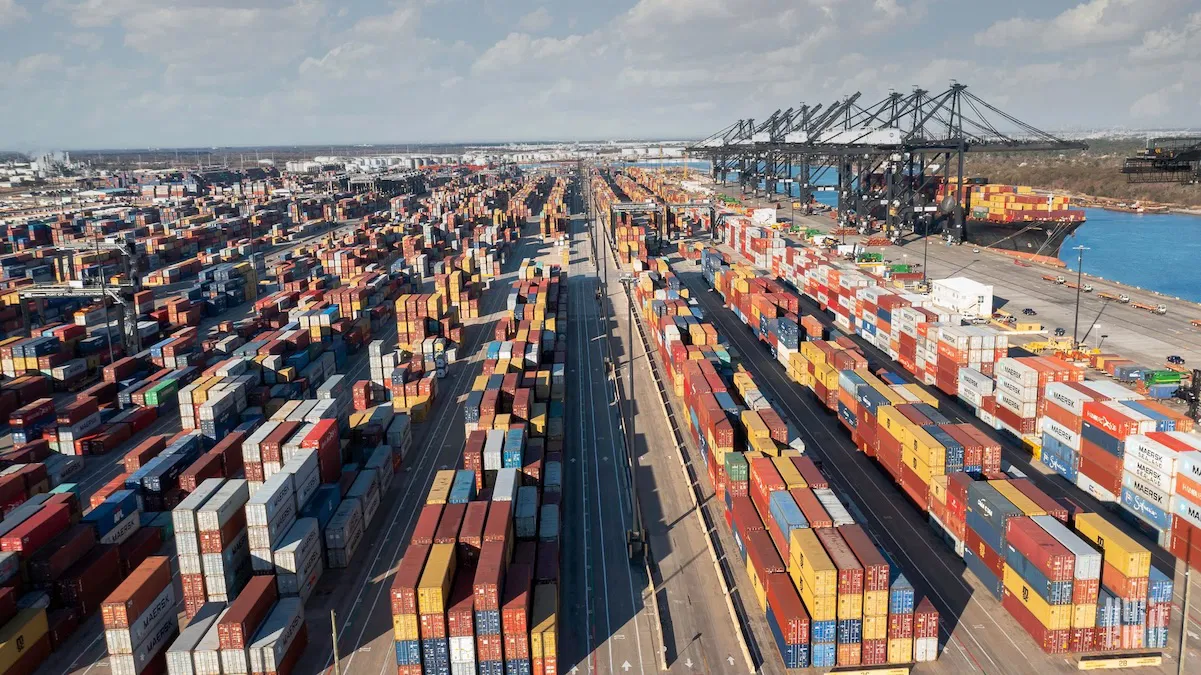Ocean container spot rates on the benchmark Far East-U.S. route have experienced a moderation in their steep declines. Since June, these rates have seen an average 53% drop, impacting destinations on the East and West coasts.
The latest update from shipping consultant Xeneta reveals that the market average spot rates from the Far East to the U.S. West Coast have decreased by 3% from July 31 to $2,098 per forty foot equivalent unit (FEU). Similarly, the rates to the East Coast have fallen by 9% from July 31 to $3,311.
These declines are significantly lower compared to the previous months. Since June 1, the West Coast has experienced a 62% decrease, while the East Coast has seen a 53% decrease. After further declines of 9% since June 31, the rates to the West Coast reached $2,015 per FEU, and to the East Coast, they reached $2,015 per FEU.
Peter Sand, Xeneta’s chief analyst, explained in a research note that carriers have taken action to address the plummeting average spot rates on the trans-Pacific trade to the U.S. West Coast through effective capacity management. As a result, blanked sailings have almost doubled the level in mid-June.
However, Sand acknowledged that the dramatic spot rate decline has slowed in August, indicating some success for carriers. However, this improvement is limited and insufficient to halt the downward trajectory in the coming months.
Sand emphasized that the significant overcapacity in the global container shipping fleet and a muted forecast for demand pose challenges in maintaining elevated spot rates. Holding back the tide, regardless of carriers’ efforts, will be difficult.
The four-week rolling average of blanked sailings from the Far East to the U.S. West Coast has increased from 30,000 TEUs per week on June 22 to 57,000 TEUs on August 1.
Logistics providers have observed that the increased blankings have contributed to an uptick in serious ongoing congestion issues at some of the busiest Chinese container ports. As a result, loaded boxes are sitting on the docks, as shippers use the ports as de facto warehouses while awaiting vessel capacity.
Xeneta also reported that the market average spot rates from the Far East to North Europe were $3,330 per FEU, while those to the Mediterranean were $3,372 per FEU.
Far East to North Europe rates have stabilized after experiencing a significant increase of 78% between May 31 and July 1. However, prices have since declined by 2%. Moreover, the average spot rates from the Far East to the Mediterranean have further decreased by 7% since July 31 and by 26% since June 15.
The spread in average spot rates for Far East trades to North Europe and the Mediterranean is nearly equal at $42 per FEU. Notably, on June 1, this spread was $1,765.
Given the strong container volumes to Europe throughout the summer, some observers have speculated that China was offering substantial discounts on goods to maintain the operation of its factories. This was due to the fact that U.S. tariffs effectively constituted an embargo on China’s most crucial trading partner.




